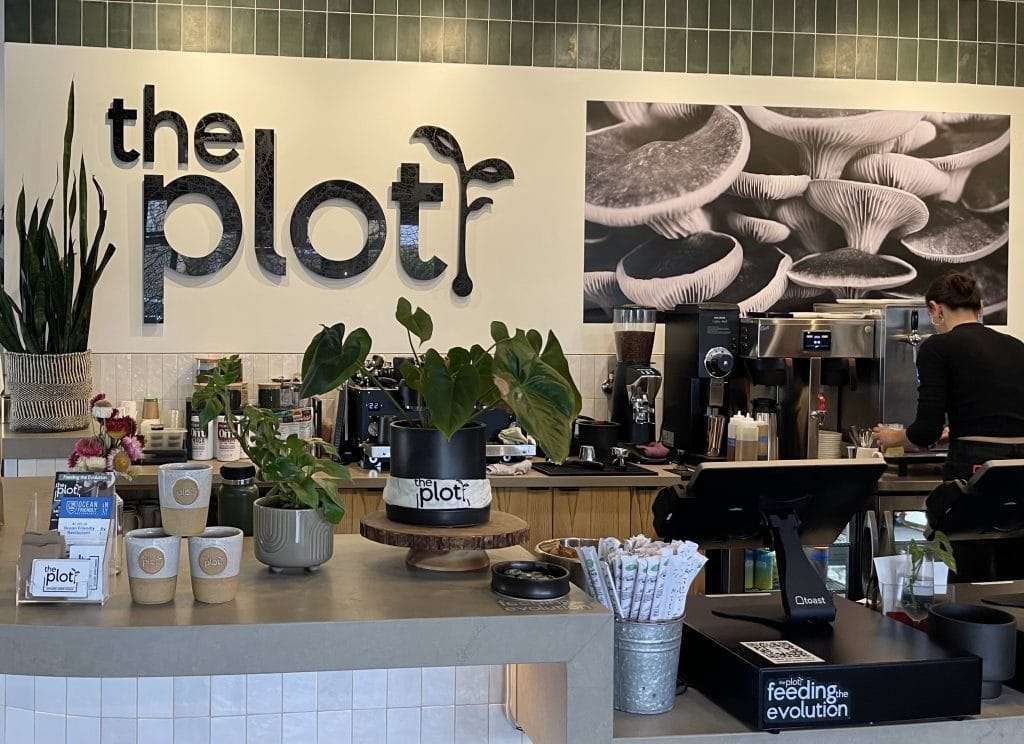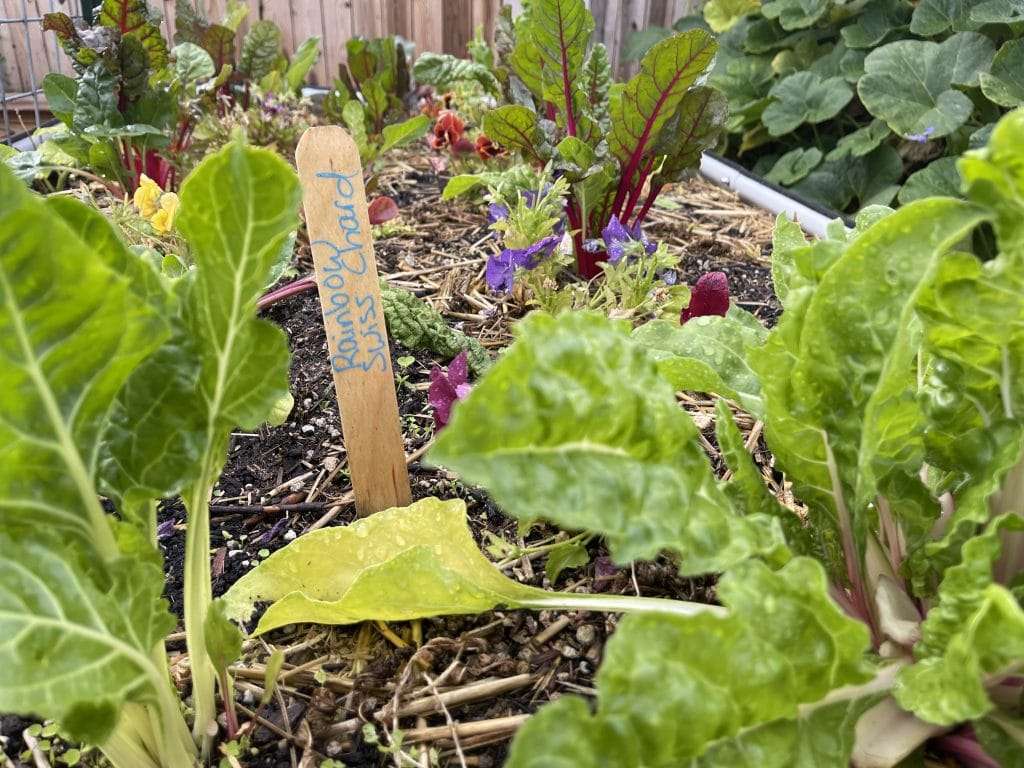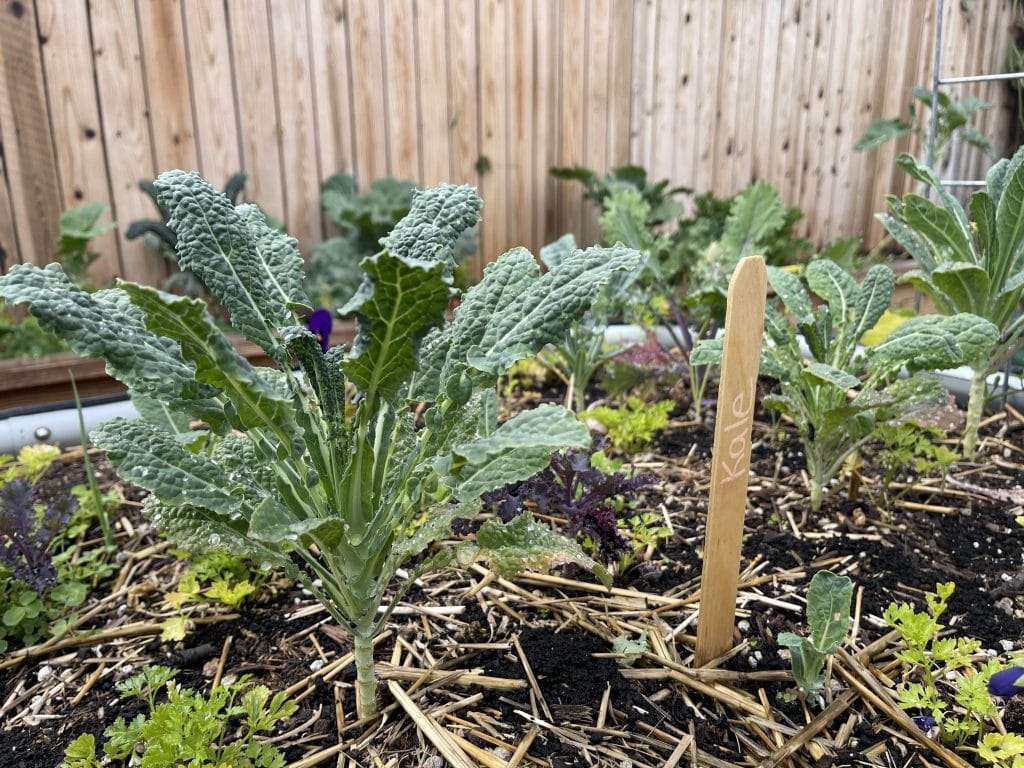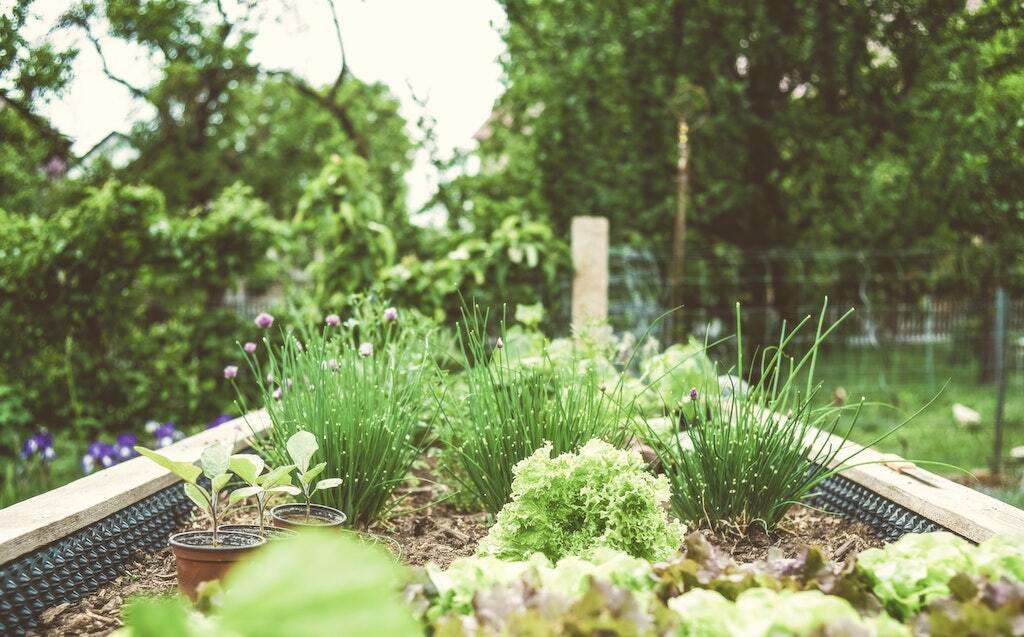California-based restaurant The Plot grows its own herbs and vegetables — and you can too. Here’s how they recommend growing your own food at home.
Located in the coastal suburb of Oceanside, California, The Plot is on a mission to make sustainable dining the norm. In addition to serving up exclusively plant-based fare, the restaurant makes good on its zero-waste ethos. It diverts 100 percent of its waste from landfills. Any leftover food scraps that the eatery is unable to use are either composted or fed to a very large (and very hungry!) tortoise.
Even the building itself is sustainable — its exterior features reclaimed wood paneling. But nestled on a lot around the back of the restaurant is arguably one of its most innovative sustainable initiatives: a regenerative garden.
The Plot: a sustainable dining experience
In the mood for sushi? The Plot’s “Seedy Greens” roll is a must-try. It features onion, squash, spicy vegan crab, and leafy greens straight from the veggie garden. Wrapped in nori, the roll is topped with chives, spicy citrus soy sauce, and pickled mustard seeds.
From parsley and kale to rainbow chard and even hon tsai tai — a type of Chinese flowering cabbage that has a mild, sweet flavor — the restaurant uses the herbs and vegetables grown in the garden to make many of its deliciously eclectic dishes.
The restaurant’s co-founder, Jessica Waite, says this helps the establishment minimize the amount of waste it generates. “The onsite garden has really allowed us to maximize our positive impact,” she explains. “We work with a local nonprofit farm to manage this, and the veggies are walked across an alley into our restaurant.”

Once the vegetables are picked and brought into the kitchen, they’re used in their entirety. “Our chefs get to access the whole plant, not just the part that is typically sold in the market,” she says. “For example, we grow a lot of chayote squash. The fruit of the plant is used for our squash ceviche, while the tendrils and stems are delicious in stir fry and the leaves make a great wrap.”
Jessica, along with her husband, Davin, founded the restaurant in early 2020. Jessica says the inspiration for the eco-conscious concept stemmed from her childhood. “I grew up in a household that didn’t waste a lot,” she explains. “And the idea of respecting resources and minimizing my impact always made sense to me. Creating a business based on sustainability means that as we grow the company, we amplify our impact.”
The benefits of growing your own produce
Whether you’re growing a handful of herbs on your kitchen counter or a bountiful vegetable oasis in your backyard, growing your own food has a number of health and environmental benefits.

Although they have a lower carbon footprint than animal products like beef and chicken, the process of harvesting, shipping, and distributing produce to stores emits greenhouse gases. By growing your own produce at home, you help to minimize transportation-related emissions. You’ll also be certain that your produce is free of chemicals and pesticides — which is good for your health and the health of the planet.
Since time is an especially important factor in terms of nutrient loss, homegrown foods can also have a higher nutritional value compared to their store-bought counterparts because they don’t have to travel far to reach the dinner plate.
Starting a home garden
You don’t have to venture out to the sunny city of Oceanside to indulge in a meal of fresh, nutritious veggies. You don’t even have to leave your house. You can easily grow your favorite produce right at home—even if you live in an apartment. Here’s how.
1. Choose your produce wisely
There are a variety of fruits, vegetables, and herbs that thrive in small spaces. Popular herbs for home gardens include chives, parsley, basil, thyme, and mint. Salad greens like spinach, arugula, and lettuce are also a home garden go-to because they grow relatively fast and are shallow-rooted.

2. Get creative with your planters
You don’t have to stick to plain pots. From hanging baskets, which are a terrific option for tomatoes, to window boxes — perfect for sun-loving strawberries—you can choose the optimal container that fits your space. If you want to go the more sustainable route, you can upcycle wine boxes, wooden crates, and even drawers.
3. Opt for a garden kit
Make your home garden experience stress-free with a garden kit—no green thumb required. The self-fertilizing and self-watering Farmstand makes growing your own food at home a breeze. Designed for the indoors, the Gardyn Home Kit 1.0 is a fully automated smart vertical growing system that can grow anything from tomatoes to thyme and jalapeños. For a smaller option, try the Ivation 12-Pod Indoor Herb Garden Starter Kit, which features optimal lighting for a variety of herbs, vegetables, fruits, and flowers.
For more tips on how to be more sustainable in the kitchen, read our tips to cook sustainably.
Related on Ethos:


